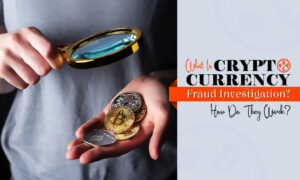One of the booming industries that were born from blockchain technology is the NFT space. Not only are they making big money, but since they use blockchain technology, they can be fraud-proofed easily and can automatically disburse royalties to the original creator each time they’re sold or traded.
There have been NFT assets that have sold for more than $50 million for just a single piece of digital art, while others routinely sell for thousands or tens of thousands of dollars each day. This makes minting your own Crypto NFT an extremely attractive possibility, but from the outside looking in it can seem very complex. We’re going to simplify the process for you, breaking it down step by step, so that when you’re ready, you can easily get your assets up for sale.
How to Create NFTs: Step by Step
1. Understand What an NFTs
Arguably the most crucial step in creating an NFT is knowing what they are. NFT stands for non-fungible token and represents a unique digital asset recorded on a specific blockchain. This may sound like cryptocurrency, and while they are similar, there are some key differences.
They both hold value, but NFTs are unique tokens that serve to show ownership and provenance for a specific asset. This sets them apart from cryptocurrencies like bitcoin, for example. While each bitcoin may have a unique digital signature that differentiates it from other bitcoins, every bitcoin is the same and there is no reason to own one specific coin over another.
2. Pick Your Asset
Once you understand what an NFT is and how it functions, it’s time to take the first tangible step toward making your own. You will need to pick a digital asset that you will mint into an NFT, which can be anything present in the digital space such as music, video game skins or other collectibles, an historic tweet, or even a particularly spicy meme.
The only catch here is that you must make sure that you are the legitimate owner of the property rights that govern the item you’ll be minting. Consider this fair warning that minting an NFT from something you do not own can have you facing significant legal consequences.
3. Choose Your NFTs Blockchain
NFTs are based on a specific blockchain, that once decided on, cannot be changed. The most popular blockchain for hosting NFTs is the Ethereum blockchain, which uses the Ether token and can facilitate smart contracts. There are additional options that include the Polkadot network, the Binance Smart Chain, and more. We can’t cover all of the benefits and drawbacks of each network here, so be sure you research them deeply.
4. Choose Your Wallet
Once you’ve picked your blockchain, you’ll need to create a compatible crypto wallet. While you won’t necessarily need to pay crypto upfront for your NFT, depending on the marketplace you choose, you will need to have a wallet ready to receive any proceeds from your NFT sales. Common wallets are Metamask, Trust Wallet, and Coinbase.
5. Choose Your NFT Marketplace
Now that you have a crypto wallet ready that is compatible with your selected NFT blockchain, you need to pick a platform to mint on, these platforms are referred to as NFT marketplaces. There is a long list of marketplaces, some will allow “lazy minting” which will not require funding upfront, while others will require you to pay fees for each NFT your mint. There are benefits to each method, as well as drawbacks. Some of the leading marketplaces include Rarible, SuperRare, Mintable, OpenSea, ThetaDrop, and CrypoPunks.
6. Connect Your Wallet & Your Marketplace
Once you have your wallet and your marketplace picked, you need to connect the two. Most marketplaces will make this as easy as a few clicks, while others may have a more complicated connection procedure. Be sure that you are only allowing a connection to your wallet during this specific step, and other prompts to connect, especially outside of the marketplace, can put you at risk for malicious activity.
7. Upload Your Asset
Here’s where you finally create your NFT. Your marketplace will ask you to upload the asset that you’ve chosen, whether it’s a picture of your cat in their favorite hat or an MP3 of your dog snoring, and it will perform the necessary process to mint that asset and record it on the blockchain.
8. Set Your Sales Process Details
The final step is deciding how you want your sales to work. Fixed price sales are simple, and allow someone to immediately purchase the NFT. Auctions work as you’d expect, with the added option of setting a time limit or just driving up bidding until you feel it’s time to end it.
Creating Your NFT Doesn’t Have to be Difficult
While NFTs can utilize state-of-the-art blockchain technology, they don’t have to be exclusively used by the tech-savvy. By following this simple guide and taking a little time to plan out your assets, you will be able to mint your own NFT in as little as a few minutes. With a little experience, you’ll be using major marketplaces and reaping the rewards in your preferred cryptocurrency.



































